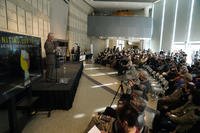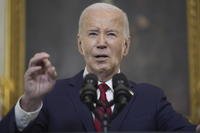No, not the weather-type, although that would be interesting just to see the reaction of the Global Warming crowd.
These are of the Eurofighter-type Typhoon, generally considered a  4.5th generation fighter, and the Saudis are purchasing 72 of the for either 6bn (or 4.43bn, depending on the news site,or 6.4 billion or about $8-12bn USD) which is part of a larger 20bn arms deal between the Saudi government and the British defense contractor BAE Systems.
4.5th generation fighter, and the Saudis are purchasing 72 of the for either 6bn (or 4.43bn, depending on the news site,or 6.4 billion or about $8-12bn USD) which is part of a larger 20bn arms deal between the Saudi government and the British defense contractor BAE Systems.
As Kris Alexander wrote here on DT back in February of this year, this is just the expected result of ..."Iraq-fueled tension in the Middle East...setting off a defense buying binge." Lots of money flying around there, but that is nothing new.
The Typhoon itself is a fine looking and performing fighter, ranked up there with other aircraft from the past decade or so, including the French Dassault Rafael, the the various SU-27 derivatives, the F/A-18 E/F and the latest versions of the F-15.
With supercruise, a digital cockpit, direct voice inputs for specific aircraft functions, canards to augment flight capabilities, the ability to carry all the current inventories of weapons (advanced  short and medium range IR and radar missiles, anti-ship missiles, laser guided bombs, laser designating pod, internal gun, the works) to meet any mission requirement, the jet is one sweet machine. I just wonder about its stealth abilities against enemy radars with that big delta wing and those huge square intakes.
short and medium range IR and radar missiles, anti-ship missiles, laser guided bombs, laser designating pod, internal gun, the works) to meet any mission requirement, the jet is one sweet machine. I just wonder about its stealth abilities against enemy radars with that big delta wing and those huge square intakes.
With two EJ200 afterburning engines (or "reheat" as the Brits and folks over there call it), each motor puts out 13,500 lbs of thrust in military and 20,000 lbs of thrust in full blower. Compared to the F/A-18 GE F414s, which pump out 14,000 and 20,000 respectfully, they compare favorably but keep in mind the historical differences between an Air Force land-based jet and a Navy jet and even a less powerful engine will still make the Air Force jet do eye-watering things because of its greater thrust-to-weight ratio.
Max takeoff weight is 51,200 lbs (compare that to the Tomcat's 72,000 max t/o weight!) and again this personifies a land-based Air Force-type strike-fighter capability - a light aircraft with beasty engines that can haul the mail and doesn't need the extra strength and weight necessary for carrier operations.
Bottom line with this Saudi deal is a couple of things. It widens an already wide gap with the main threat in the region, that being Iran's increasingly antiquated and anachronistic menagerie of an Air Force with its Dassault/Sukhoi/Grumman/McDonnell Douglas/Northrop dinosaurs (what an International Flight Museum that would make!) and its home-grown Saeqeh twin-tailed F-5 knockoff. Should any aerial conflict arise that would involve the Iranian air order of battle, this patchwork air force really wouldn't last long against any regional air capability with the possible exception of Iraq's C-130s and helicopters.
The other element is to watch the Peyton Place aspect of this as BAE goes under the microscope of the US Justice department for accusations of bribing the Saudi government and Prince Bandar bin Sultan, former ambassador to the United States and now head of Saudi Arabia's National Security Council during a $86 billion Al-Yamamah arms deal (including Hawk and Tornado jets) negotiated in 1985. This investigation comes after Britain's "Serious Fraud Office" (what a *great* government agency name!) dropped its investigation of BAE Systems based on national security reasons.
More information on the Typhoon is here at the Eurofighter home page and here at FAS.
Stay tuned!
--Pinch Paisley
Typhoons come to Saudi Arabia
© Copyright 2024 Military.com. All rights reserved. This article may not be republished, rebroadcast, rewritten or otherwise distributed without written permission. To reprint or license this article or any content from Military.com, please submit your request here.








